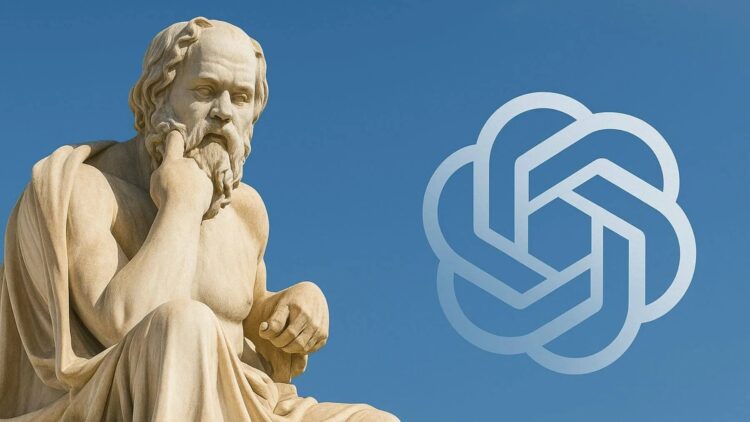The use of artificial intelligence has spread to practically all areas of our lives. It has become the problem-solving tool par excellence, but we must be careful. We cannot overlook the fact that these types of tools are not always accurate and often make mistakes. Faced with this situation, scientists from the University of Cambridge and the Hebrew University of Jerusalem wanted to test ChatGPT by posing one of Plato’s riddles.
They presented the same premise that the Greek philosopher posed in his writings to Socrates: the problem of doubling the area of a square, where it is not enough to simply double the length of each side, but one must multiply it by the square root of two for the area to truly be doubled, which is a very important geometric reasoning in the history of thought. The premise of this research was to determine whether mathematical ability is innate or learned. ChatGPT’s response led researcher Nadav Marco to recognize a geometric solution, determining that the AI’s learning is generated and not innate.
Presence of AI in our lives
The presence of artificial intelligence in all aspects of our lives is as evident as it is concerning. We have incorporated its use into our daily routines, and it has become the main problem-solving tool due to its speed and simplicity. However, we cannot overlook that it is not always accurate and often makes many mistakes. In this context, scientists from the University of Cambridge and the Hebrew University of Jerusalem wanted to test one of the most important artificial intelligences: ChatGPT.
Plato’s Enigma
In his writings to Socrates, the Greek philosopher Plato recounts how he posed to a slave the enigma of doubling the area of a square. The answer he received was to double the length of each side. However, he demonstrates that this answer would result in a square four times larger than the original, so it would not be a valid answer. The correct answer requires multiplying by the square root of two so that the area is doubled. This problem led to one of the most important geometric reasonings in the history of thought.
Chat-GPT to the test
With this approach, the scientists decided to put ChatGPT to the test. They wanted to determine if mathematical ability is learned or, on the contrary, innate. The model had undergone text-based training, which was expected to enable it to solve the problem. The researchers asked the artificial intelligence to double the area of a rectangle, to which it responded that it could not use the diagonal of a rectangle to double its size.
Nadav AMrco, a researcher in the study, was able to recognize a geometric solution and concluded that the response was indeed influenced by the square duplication problem. Starting from the premise that artificial intelligence has very little chance of providing a false statement based on the data it already possesses, it has been determined that learning is generated and not innate.
Other conclusions from the study
Another conclusion drawn from this study is that there is a possibility that ChatGPT is using a well-known concept called the zone of proximal development (ZPD). This refers to the difference between what we know and what we could come to know with proper educational guidance, and it could be observed in the behavior of its responses, not only improvising but also making mistakes.
